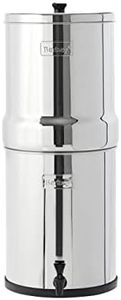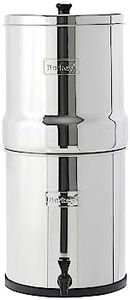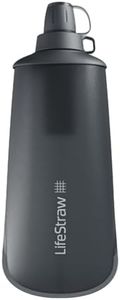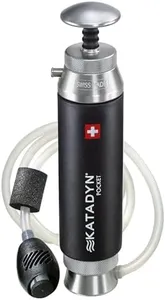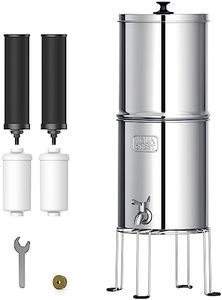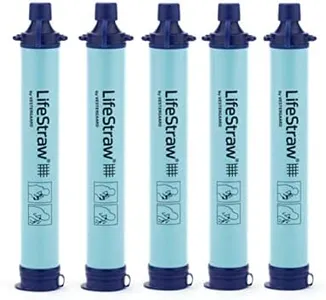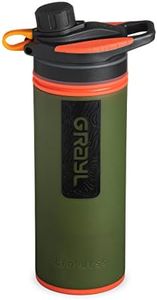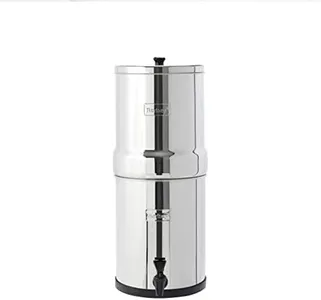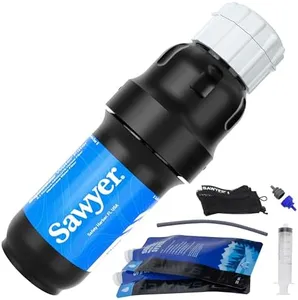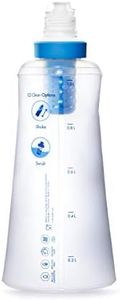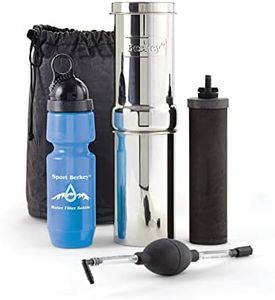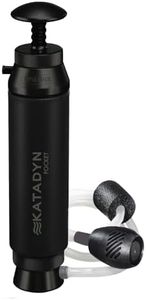We Use CookiesWe use cookies to enhance the security, performance,
functionality and for analytical and promotional activities. By continuing to browse this site you
are agreeing to our privacy policy
10 Best Emergency Water Purifiers
From leading brands and best sellers available on the web.Buying Guide for the Best Emergency Water Purifiers
Choosing an emergency water purifier is all about ensuring you have access to safe, drinkable water when normal sources might be unsafe or unavailable. Whether you're preparing for natural disasters, hiking, or traveling to places with unreliable water, the right purifier keeps you healthy by removing harmful contaminants. Your decision should focus on the types of contaminants you need to deal with, the expected water sources, and how many people will rely on it. Understand your needs, and you'll find a water purifier that's both dependable and easy to use when you need it most.Filtration TypeFiltration type refers to the technology the purifier uses to clean the water, such as mechanical filters, chemical treatments, UV, or a combination. This is important because different methods remove different contaminants. For example, mechanical filters trap dirt and protozoa, chemicals neutralize bacteria and viruses, and UV disables microorganisms. If you're only worried about clear mountain streams, a basic filter might be enough; if you could encounter viruses or chemical pollutants, consider multi-stage or advanced options. Your choice should be based on where you expect to find water—surface water, questionable tap water, or water with a high risk of viral contamination.
Micron RatingMicron rating indicates the size of particles the purifier can remove, measured in microns (one-millionth of a meter). Lower numbers mean finer filtration, important for blocking bacteria and protozoa. Most basic filters remove particles down to 0.2-0.1 microns, trapping most bacteria and protozoa, but viruses are even smaller and may slip through. If virus removal matters (like if you're traveling in areas with poor sanitation), look for purifiers designed to address this, either through fine filtration or chemical/UV steps. Consider the water quality where you'll use it: cleaner sources might only need larger micron ratings, dirtier or higher-risk water needs finer filtration.
Capacity and SpeedCapacity tells you how much water the device can treat at one time, and speed measures how quickly it works. Compact models might filter a cup at a time, while larger ones can handle liters. This spec matters when choosing for solo use or groups—small, light filters are great for personal emergencies and hiking, while families or teams should look for higher-capacity options. Choose based on your group size and how urgently you'll need clean water; for larger groups or faster turnaround, prioritize higher capacity and faster flow rates.
Durability and MaintenanceDurability is about how well the purifier and its components stand up to rough use, drop, and variable weather. Maintenance includes how often parts need replacing and how easy it is to clean. In emergencies, reliability is critical—simple, sturdy purifiers with minimal moving parts are preferable. Consider where and how often you'll use it: frequent adventurers and those prepping for all scenarios should pick robust, low-maintenance options, while infrequent users can focus on ease of storage.
PortabilityPortability means how easy it is to carry the purifier with you, including its size and weight. For backpacking and emergency kits, compact and lightweight options are vital, while for home or larger group needs, bulkier but more powerful units can be suitable. Think about how far you'll need to transport it and what you can carry comfortably—if you're on foot, smaller is better, but for vehicle or base-camp situations, weight matters less.
Ease of UseEase of use describes how straightforward the purifier is to operate, especially under stress. Some require pumping or squeezing, others only need dipping or stirring. In emergencies, simple operation is crucial so anyone can use it safely. If you're inexperienced, choose models with minimal steps to avoid confusion; more complex ones may offer extra features but demand more attention and skill.

